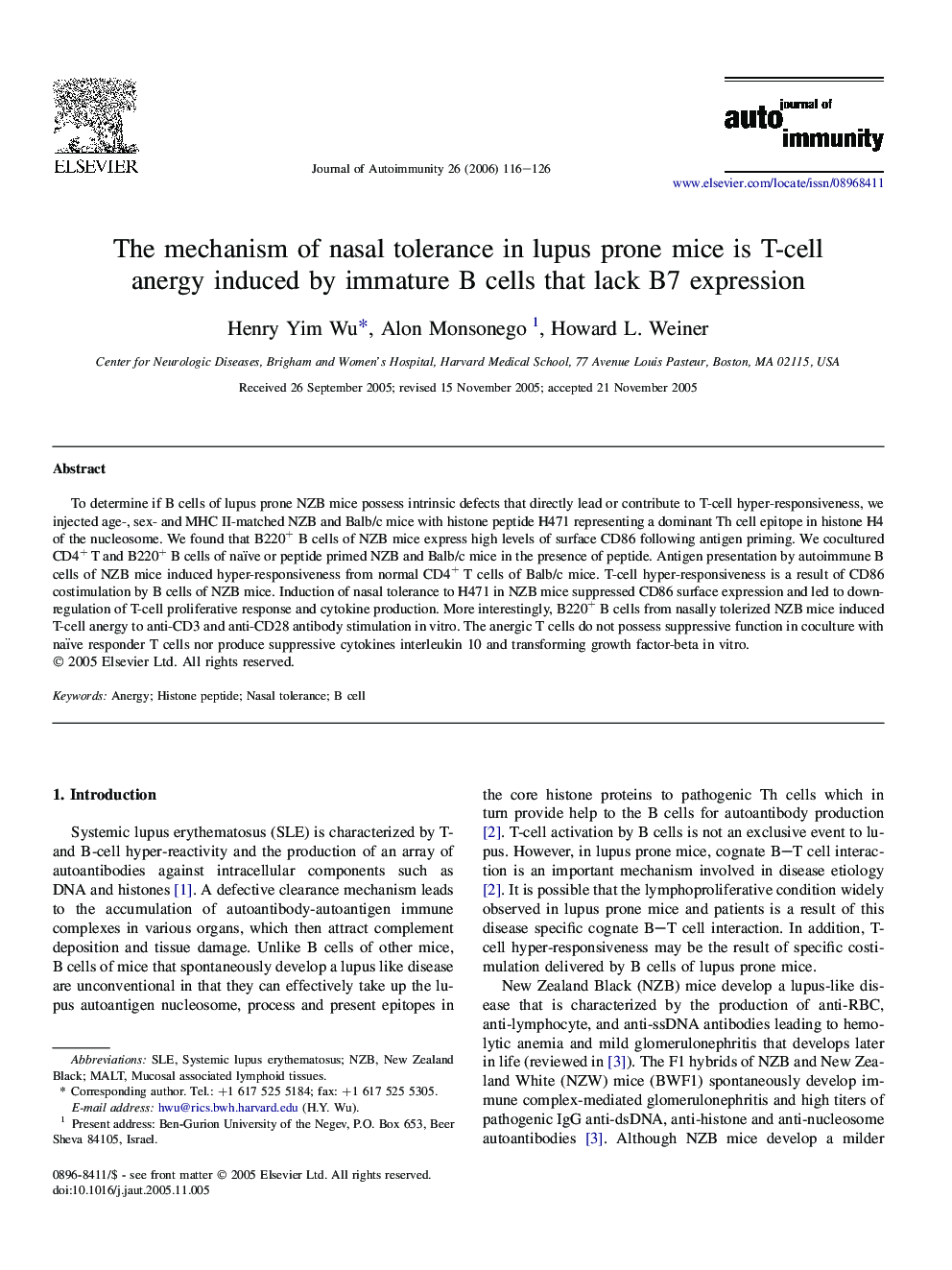| Article ID | Journal | Published Year | Pages | File Type |
|---|---|---|---|---|
| 3368593 | Journal of Autoimmunity | 2006 | 11 Pages |
Abstract
To determine if B cells of lupus prone NZB mice possess intrinsic defects that directly lead or contribute to T-cell hyper-responsiveness, we injected age-, sex- and MHC II-matched NZB and Balb/c mice with histone peptide H471 representing a dominant Th cell epitope in histone H4 of the nucleosome. We found that B220+ B cells of NZB mice express high levels of surface CD86 following antigen priming. We cocultured CD4+ T and B220+ B cells of naïve or peptide primed NZB and Balb/c mice in the presence of peptide. Antigen presentation by autoimmune B cells of NZB mice induced hyper-responsiveness from normal CD4+ T cells of Balb/c mice. T-cell hyper-responsiveness is a result of CD86 costimulation by B cells of NZB mice. Induction of nasal tolerance to H471 in NZB mice suppressed CD86 surface expression and led to downregulation of T-cell proliferative response and cytokine production. More interestingly, B220+ B cells from nasally tolerized NZB mice induced T-cell anergy to anti-CD3 and anti-CD28 antibody stimulation in vitro. The anergic T cells do not possess suppressive function in coculture with naïve responder T cells nor produce suppressive cytokines interleukin 10 and transforming growth factor-beta in vitro.
Related Topics
Life Sciences
Immunology and Microbiology
Immunology
Authors
Henry Yim Wu, Alon Monsonego, Howard L. Weiner,
